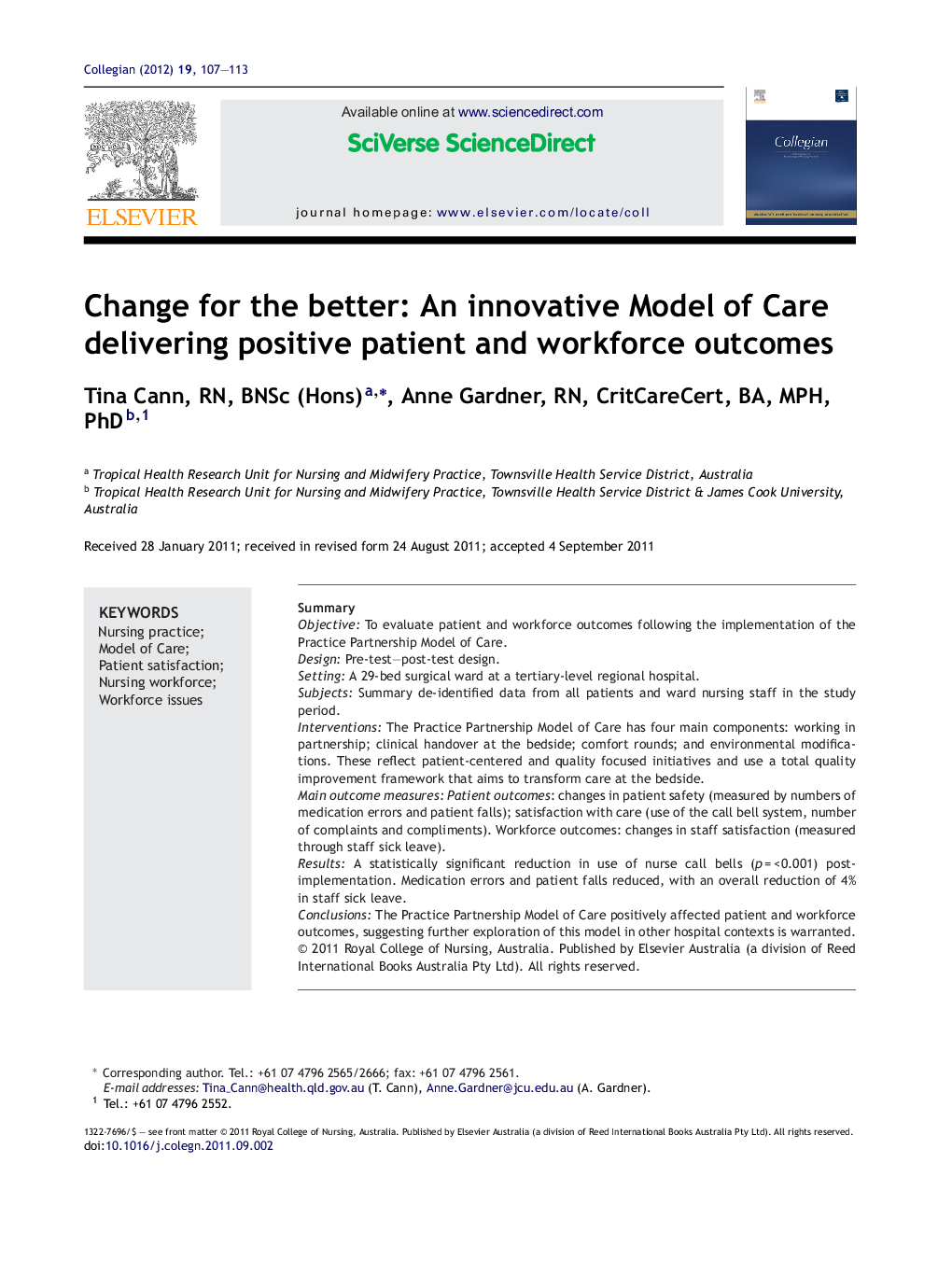| Article ID | Journal | Published Year | Pages | File Type |
|---|---|---|---|---|
| 2646916 | Collegian | 2012 | 7 Pages |
SummaryObjectiveTo evaluate patient and workforce outcomes following the implementation of the Practice Partnership Model of Care.DesignPre-test–post-test design.SettingA 29-bed surgical ward at a tertiary-level regional hospital.SubjectsSummary de-identified data from all patients and ward nursing staff in the study period.InterventionsThe Practice Partnership Model of Care has four main components: working in partnership; clinical handover at the bedside; comfort rounds; and environmental modifications. These reflect patient-centered and quality focused initiatives and use a total quality improvement framework that aims to transform care at the bedside.Main outcome measuresPatient outcomes: changes in patient safety (measured by numbers of medication errors and patient falls); satisfaction with care (use of the call bell system, number of complaints and compliments). Workforce outcomes: changes in staff satisfaction (measured through staff sick leave).ResultsA statistically significant reduction in use of nurse call bells (p = <0.001) post-implementation. Medication errors and patient falls reduced, with an overall reduction of 4% in staff sick leave.ConclusionsThe Practice Partnership Model of Care positively affected patient and workforce outcomes, suggesting further exploration of this model in other hospital contexts is warranted.
